Robert Browning’s My Last Duchess is a masterful dramatic monologue exploring themes of power‚ jealousy‚ and art through the Duke of Ferrara’s chilling portrayal of his late wife.
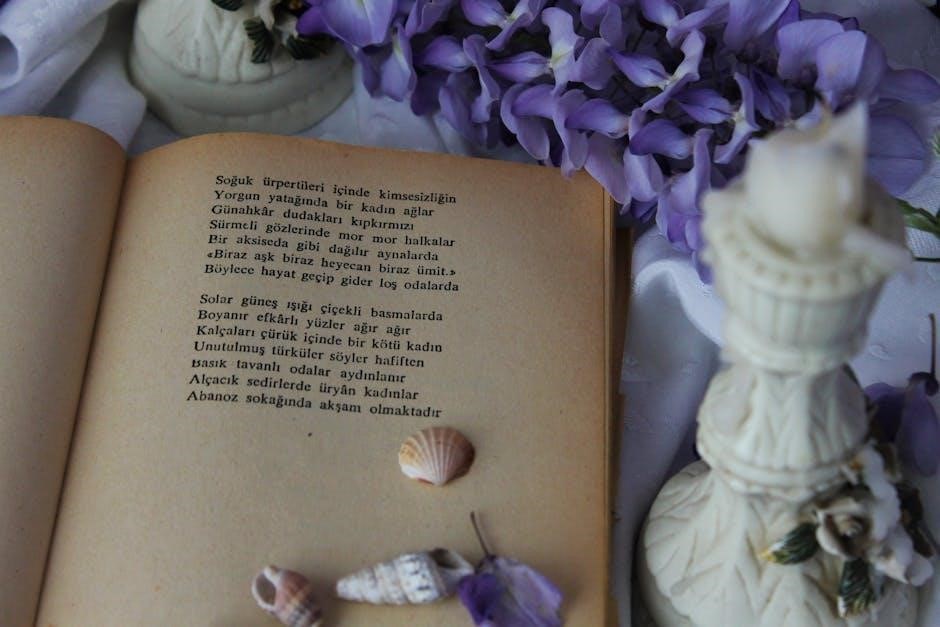
Author Background: Robert Browning
Robert Browning (1812–1889) was a prominent Victorian poet and playwright‚ celebrated for his dramatic monologues. Born in Camberwell‚ London‚ Browning developed a passion for poetry early in life‚ influenced by his father’s extensive library. His works often explored complex characters and moral dilemmas. In 1845‚ he married fellow poet Elizabeth Barrett‚ forming a literary partnership. Browning’s travels across Europe inspired much of his writing‚ including My Last Duchess‚ which reflects his fascination with Italian Renaissance culture. His innovative use of language and psychological depth earned him acclaim‚ making him one of the most respected poets of his era.
Robert Browning’s My Last Duchess is a dramatic monologue set in Renaissance Italy. The poem revolves around the Duke of Ferrara‚ who showcases a painting of his late wife to a visitor. The Duke’s dialogue reveals his possessive and controlling nature‚ as he critiques the Duchess’s cheerful demeanor and supposed lack of appreciation for his gifts. He implies her tragic fate‚ suggesting he orchestrated her death due to her perceived shortcomings. The poem builds tension through the Duke’s chilling admissions‚ highlighting his obsession with power and dominance. Browning masterfully crafts a psychological portrait of a man driven by jealousy and an unsettling admiration for his late wife’s image.
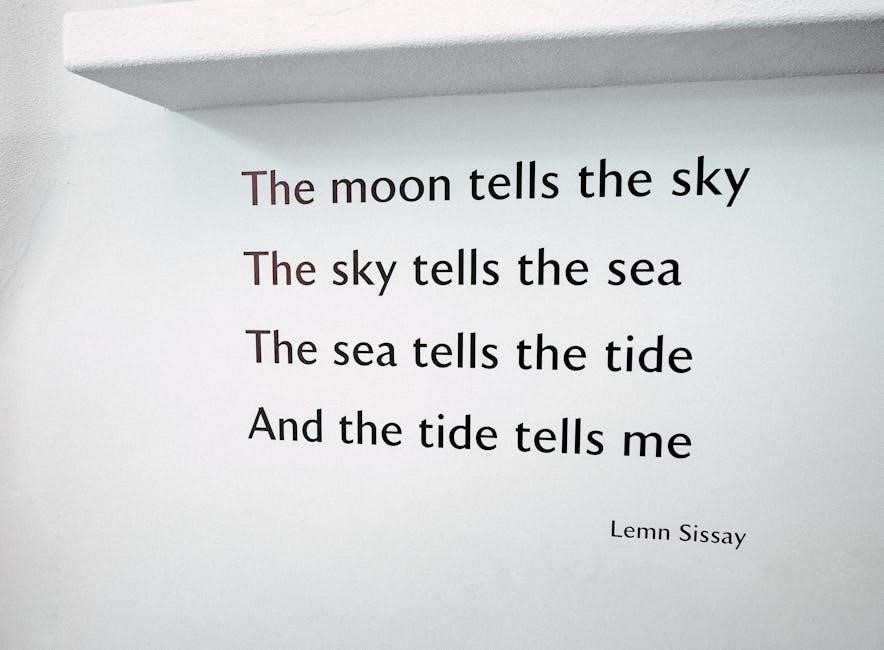
Major Themes in “My Last Duchess”
The poem explores themes of power dynamics‚ jealousy‚ art and reality‚ and morality‚ revealing the Duke’s possessive nature and the tragic fate of his last duchess.
Power Dynamics
In My Last Duchess‚ Robert Browning masterfully portrays the unsettling power dynamics between the Duke of Ferrara and his deceased wife. The Duke’s monologue reveals his obsessive control and dominance‚ as he objectifies the Duchess‚ reducing her to a mere possession. His pride in her portrait and his possessive tone highlight his need for mastery over her image and legacy‚ even in death. The poem underscores the societal norms of the time‚ where men held significant power in relationships‚ often leading to tragic consequences for women. The Duke’s casual yet chilling demeanor further emphasizes the imbalance‚ showcasing how power can corrupt and destroy.
Jealousy and Possessiveness
Jealousy and possessiveness are central themes in My Last Duchess‚ as the Duke’s monologue reveals his obsessive and controlling nature. His jealousy stems from the Duchess’s cheerful and affectionate demeanor‚ which he interprets as a lack of appreciation for his gifts and status. The Duke’s possessiveness is evident in his fixation on her portrait‚ which he uses to exert control over her image and memory. His inability to tolerate her kindness to others ultimately leads to her tragic fate. Browning masterfully portrays how unchecked jealousy can escalate into possessiveness‚ highlighting the darker aspects of human psychology and the destructive consequences of such emotions.
Art and Reality
In My Last Duchess‚ Browning explores the intersection of art and reality through the Duke’s obsession with the portrait of his late wife. The painting‚ created by Fra Pandolf‚ is described as so lifelike that it seems the Duchess might step out of the frame. This blurring of art and reality underscores the Duke’s attempt to control and immortalize her image‚ reflecting his desire to possess her completely. The poem highlights how art can both capture and distort reality‚ serving as a medium for the Duke’s possessiveness and vanity. This theme is central to the poem’s psychological depth‚ illustrating the tension between artistic representation and human complexity.
Morality and Ethics
The poem raises profound moral and ethical questions‚ particularly through the Duke’s justification of his actions. His belief that the Duchess’s smiles were too freely given suggests a warped sense of morality‚ where possession and control justify extreme measures. The Duke’s ethical framework is rooted in a twisted sense of honor and pride‚ where the value of human life is secondary to his ego. Browning critiques the moral corruption that can arise from unchecked power and societal expectations. The poem challenges readers to reflect on the ethical implications of such actions and the broader societal norms that enable them‚ particularly in patriarchal systems.
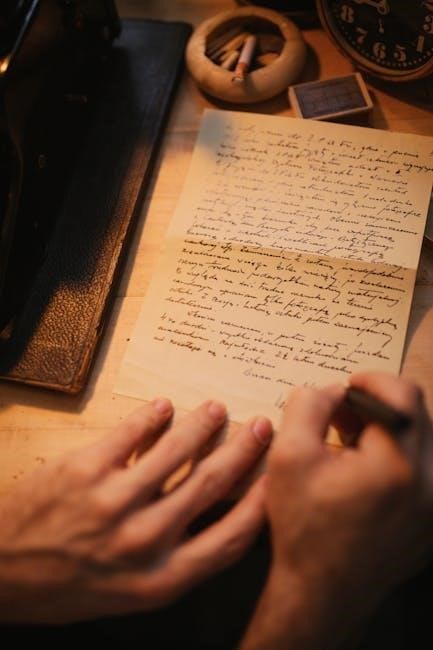
Literary Devices Used
Robert Browning employs dramatic monologue‚ imagery‚ and symbolism to convey the Duke’s psyche‚ while irony underscores the tension between appearance and reality‚ enhancing the poem’s chilling effect.
Dramatic Monologue
Robert Browning’s My Last Duchess is a quintessential example of a dramatic monologue‚ where the Duke of Ferrara reveals his character through a single‚ uninterrupted speech. This literary device allows Browning to explore the Duke’s psyche‚ exposing his pride‚ possessiveness‚ and chilling morality. The monologue’s intimate nature creates a direct connection between the Duke and the reader‚ drawing them into his disturbing world. By presenting the Duke’s thoughts and feelings indirectly‚ Browning crafts a sense of immediacy and realism‚ making the poem’s themes of power and control even more unsettling. This technique remains central to the poem’s enduring impact and critical acclaim.
Imagery and Symbolism
Robert Browning’s My Last Duchess is rich in imagery and symbolism‚ with the painting of the Duchess serving as a central image. The Duke describes it as lifelike‚ emphasizing her beauty and vitality‚ yet froze in time. The painting symbolizes the Duke’s possessiveness and control‚ as he can choose when to reveal it. The use of light and color in the painting contrasts with the Duchess’s lively nature‚ highlighting her joy in small things. These details create a vivid picture of the Duchess‚ while the overall symbolism underscores themes of art‚ reality‚ and the Duke’s oppressive worldview; Browning’s imagery enhances the poem’s chilling atmosphere and moral complexity.
Irony
Robert Browning’s My Last Duchess is steeped in irony‚ both situational and verbal. The Duke’s admiration for the portrait of his late wife contrasts chillingly with his responsibility for her death‚ creating a dark irony. His casual tone while discussing her demise underscores the moral disconnect. Verbal irony is evident when the Duke praises the Duchess’s joy in small things‚ yet his rigid expectations led to her tragic end. The poem’s dramatic monologue format heightens the irony‚ as the Duke’s words reveal his true nature unintendedly. Browning masterfully uses irony to expose the Duke’s possessiveness and moral corruption‚ leaving readers with a haunting reflection on power and control. This layer of irony deepens the poem’s complexity and moral ambiguity.
Historical Context
Robert Browning’s My Last Duchess is set in the Italian Renaissance‚ specifically in Ferrara‚ a city known for its rich artistic and cultural heritage. The poem reflects the societal norms of the 16th century‚ where power‚ status‚ and possession were paramount. The Duke of Ferrara‚ as a nobleman‚ embodies the patriarchal values of his time‚ where women were often seen as objects of ownership. The reference to Fra Pandolf‚ a fictional painter‚ highlights the Renaissance fascination with art and portraiture. Browning uses this historical backdrop to explore themes of control‚ jealousy‚ and the intersection of art and reality‚ creating a chilling portrait of a society governed by rigid hierarchies and moral hypocrisy. The poem’s historical context underscores the timeless relevance of its themes.
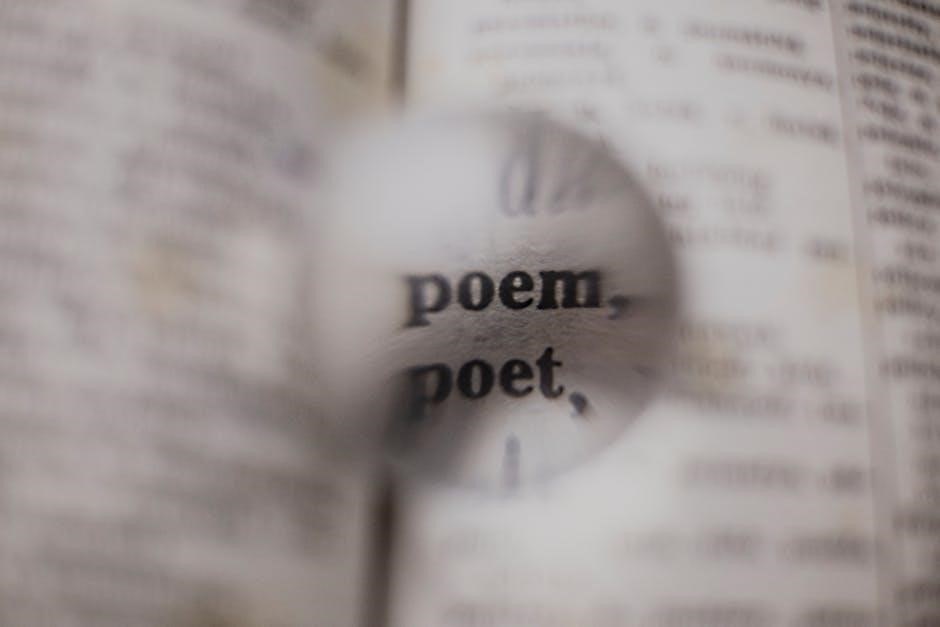
Character Analysis
The Duke of Ferrara is a controlling‚ obsessive nobleman‚ while his late Duchess is portrayed as kind and naive. Their contrasting personalities highlight the poem’s themes of power and jealousy.
The Duke of Ferrara
The Duke of Ferrara is a complex‚ manipulative nobleman who dominates the poem with his unsettling monologue. His possessive and controlling nature is evident as he discusses his late wife‚ revealing a deep-seated jealousy. He scrutinizes her cheerful demeanor‚ interpreting her kindness to others as a flaw. The Duke’s arrogance and sense of superiority are clear‚ as he justifies his actions and flaunts his power. His fixation on the portrait of the Duchess‚ painted by Fra Pandolf‚ symbolizes his desire to immortalize her under his control. The Duke’s character underscores themes of power dynamics and toxicity‚ making him one of Browning’s most chilling creations.
The Last Duchess
The Last Duchess‚ the subject of the Duke of Ferrara’s monologue‚ is portrayed as a kind and cheerful young woman whose lively spirit contrasts sharply with the Duke’s oppressive nature. Her smile and friendly demeanor‚ which the Duke interprets as flirtatiousness‚ are revealed through his jealous and possessive narrative. The Duchess’s tragic fate is implied but never explicitly stated‚ leaving room for interpretation. The painting by Fra Pandolf captures her beauty and vitality‚ symbolizing the Duke’s attempt to control and immortalize her. Her character represents innocence and the stifling of femininity under patriarchal power‚ making her a poignant figure in Browning’s exploration of morality and relationships. Her legacy endures as a symbol of suppressed individuality and grace.
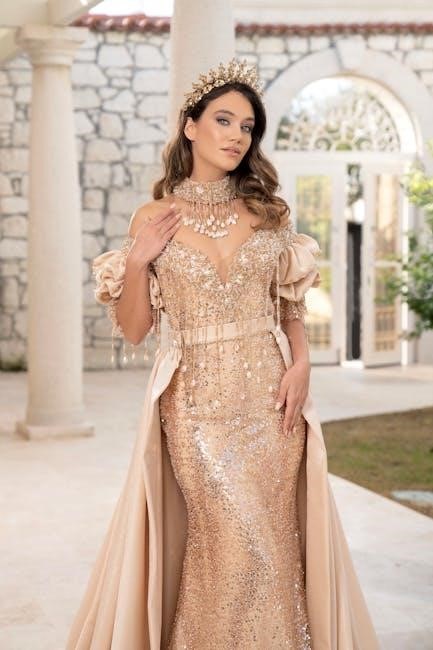
Critical Interpretations
Critical interpretations of My Last Duchess often focus on its exploration of power dynamics‚ morality‚ and the psychological complexity of the Duke. Scholars highlight the poem’s chilling portrayal of patriarchal control and the objectification of women‚ as the Duke’s possessiveness and jealousy are central to his character. The Duchess‚ meanwhile‚ is seen as a symbol of innocence and suppressed femininity. Critics also explore the interplay between art and reality‚ with Fra Pandolf’s painting serving as a metaphor for the Duke’s attempt to freeze time and control his wife’s image. The poem is widely regarded as a critique of Victorian societal norms and a masterful psychological study of a manipulative mind;
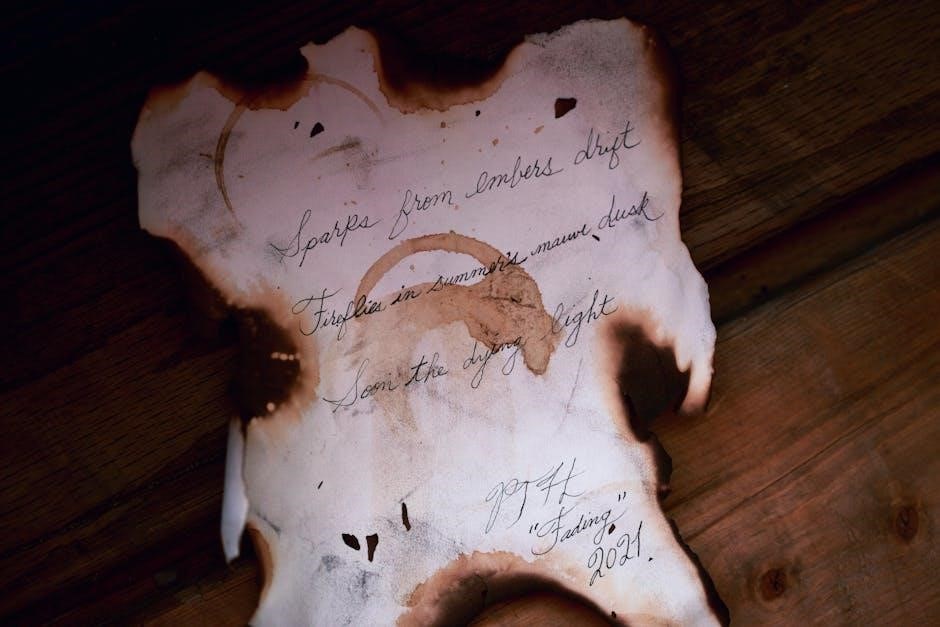
Poetic Structure and Style
Robert Browning’s My Last Duchess is renowned for its meticulous poetic structure and distinctive style. The poem employs a dramatic monologue format‚ allowing the Duke’s voice to dominate‚ revealing his psyche through subtle dialogue. The rhyme scheme follows an ABBA pattern in quatrains‚ adding a sense of musicality that contrasts with the darker themes. Browning’s use of enjambment and caesura creates a natural‚ conversational flow‚ mirroring the Duke’s calculating yet casual demeanor. The poem’s meter‚ primarily iambic pentameter‚ underscores the Duke’s measured and deliberate tone‚ heightening the tension between his refined speech and brutal intentions. This blend of form and content masterfully enhances the poem’s psychological depth and moral complexity.

Place in Browning’s Oeuvre
Robert Browning’s My Last Duchess holds a prominent place in his oeuvre as a seminal work that established his mastery of the dramatic monologue. Published in 1842 within Dramatic Lyrics‚ it marked a turning point in his career‚ showcasing his ability to probe the human psyche through complex characters. The poem’s exploration of power‚ jealousy‚ and artistry resonated deeply with Victorian audiences‚ solidifying Browning’s reputation as a leading poet of his time. Its enduring popularity has made it a cornerstone of his literary legacy‚ influencing later works and cementing its status as one of Browning’s most celebrated compositions.
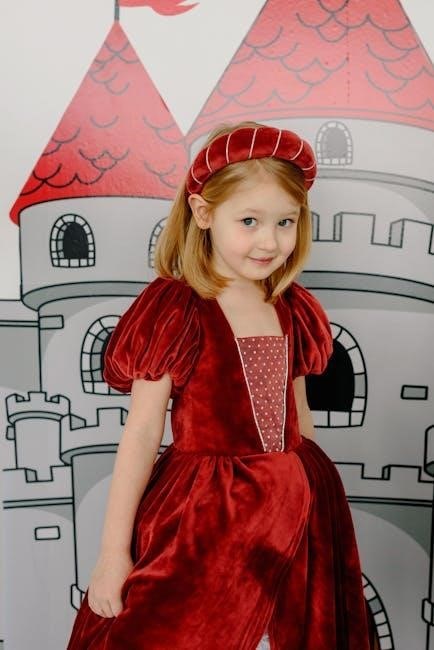
Educational Resources for Study
Students and educators can access numerous resources to study My Last Duchess. PDF versions of the poem‚ along with summaries and analyses‚ are widely available online. Educational platforms like pmt.education and SparkNotes offer detailed study guides‚ exploring themes‚ literary devices‚ and character insights. Lectures and audio discussions‚ such as those by Professor KINlsey‚ provide deeper contextual understanding. Additionally‚ downloadable documents and slide presentations summarize key points‚ making the poem accessible for classroom use. These resources aid in analyzing Browning’s dramatic monologue technique‚ helping learners grasp the poem’s complexity and its significance in Victorian literature.
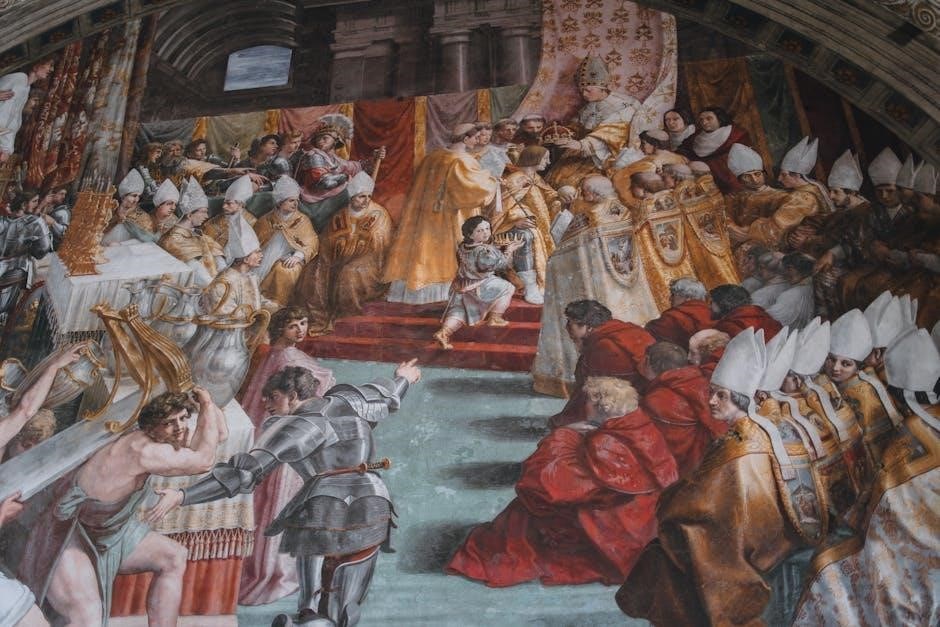
Cultural Impact and Legacy
My Last Duchess has left an indelible mark on literary culture‚ becoming a cornerstone of Victorian poetry. Its exploration of power‚ jealousy‚ and art continues to resonate‚ inspiring adaptations in film‚ theater‚ and art. The poem’s psychological depth and moral complexity make it a timeless study subject‚ sparking debates on gender roles and societal expectations; Browning’s innovative use of dramatic monologue has influenced poets and writers worldwide. Its enduring popularity is evident in its inclusion in academic curricula and its adaptation into various media‚ ensuring its relevance for future generations. The poem remains a powerful reflection of human nature and artistic expression.
Robert Browning’s My Last Duchess remains a profound exploration of human psychology‚ power‚ and morality. Through the Duke’s chilling monologue‚ Browning masterfully exposes the darker aspects of human nature‚ blending art and reality in a way that captivates readers. The poem’s enduring legacy lies in its ability to provoke thought on themes like possession‚ jealousy‚ and the ethical implications of artistic expression. Its influence is evident in literature‚ education‚ and popular culture‚ ensuring its relevance for generations. Browning’s work continues to challenge readers to reflect on the complexities of human behavior‚ solidifying My Last Duchess as a timeless masterpiece of Victorian poetry.